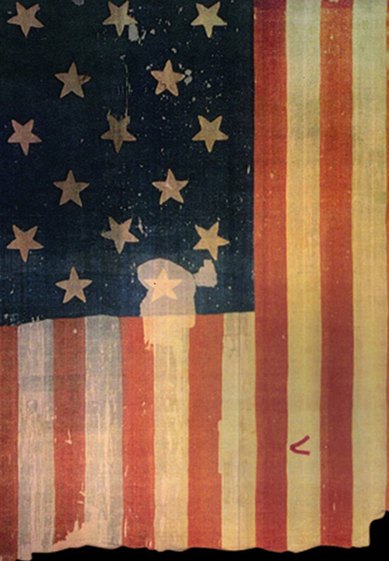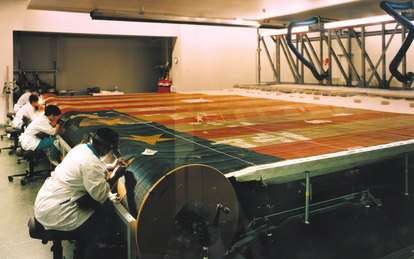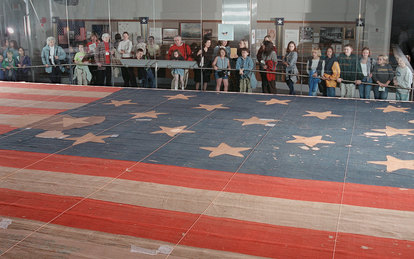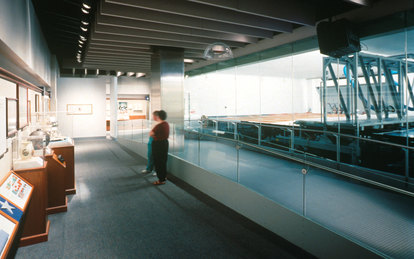Smithsonian Institution Star Spangled Banner Conservation Lab
Conserving history is accomplished through design when SmithGroup partnered with the Smithsonian to create a temporary space that would restore a symbol of freedom and give visitors a unique experience of this American artifact.
Client
Smithsonian Institution
Location
Washington, DC
Markets/Services
Architecture, Archives & Collections Care, Cultural, Lighting Design
Size
2,500 GSF
Featured Awards
Merit Award - Interiors, American Institute of Architects - Washington Chapter, 1999
The Star-Spangled Banner flag was raised over Fort McHenry on the morning of September 14, 1814, to signal American victory over the British in the Battle of Baltimore; the sight inspired Francis Scott Key to write “The Star-Spangled Banner”. The banner is fragile, and in the late 1990s the Smithsonian determined that it needed to be cleaned and restored but wanted the process to be captured as a working exhibition at the National Museum of American History, the permanent home of the flag.
Environmental control, ergonomics for conservators restoring the flag and public view were key in the design and functionality of the conservation lab. An ingenious working environment was designed wherein the flag was placed on a giant roller so it could be moved forward and backward as work progressed. A movable gantry platform suspended workers just inches above the banner to clean and repair the fabric, allowing the conservators to lie prone) minimizing neck and shoulder strain.

It was also imperative that careful air quality and fire protection had to be built into the lab – the first line of defense against fire was a FM-200 suppression system extinguishes flames through heat absorption) as water would have ruined the flag.
The Smithsonian wanted to turn the restoration into a teachable moment for visitors to the museum during the three-year restoration. Lighting was carefully balanced between protecting the banner and allowing visitors to view the process through a fifty-foot-wide floor-to-ceiling glass partition. The exhibit created an atmosphere of reverence commensurate with the artifact’s historical importance.
The renewed Star-Spangled Banner is now back on permanent display in the museum. Our team’s work to create a space that combined rigid environmental control, conservator ergonomics and educational views by the public made the lab a fitting place for restoring a national treasure.


